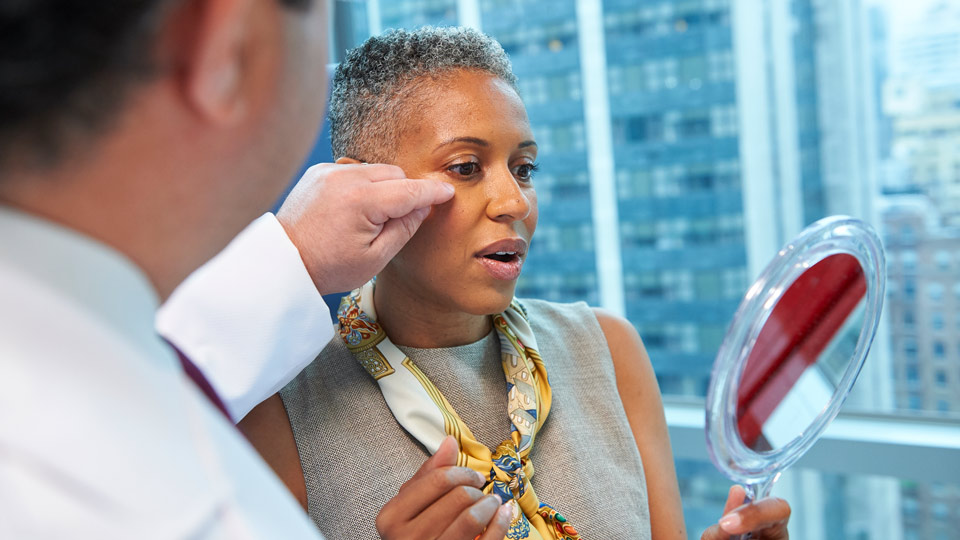The Role of a Dermatologist in Detecting and Dealing With Various Skin Problems
The role of a skin doctor expands far beyond basic skin care; it incorporates the complex processes of identifying and treating a wide selection of skin problems. Via their specialized training, skin doctors use innovative analysis techniques to determine conditions such as acne, psoriasis, and dermatitis, tailoring therapy strategies to meet individual patient demands. Nevertheless, the complexity of skin disorders often requires a diverse method that consists of not just clinical treatments but likewise person education and preventative strategies. What effects does this extensive care have for person results and overall skin health?
Value of Skin-related Knowledge
The competence of skin specialists is important in the diagnosis and administration of skin problems, as they possess specialized expertise that expands beyond basic clinical training. This sophisticated understanding is vital for precisely identifying a vast array of skin disease, which frequently provide with overlapping signs that can confuse non-specialist specialists. Dermatologists are trained to separate between various skin conditions, ensuring suitable therapy strategies are implemented swiftly.
Furthermore, the field of dermatology includes a distinct combination of professional skills and sophisticated innovation. Dermatologists use innovative analysis devices, such as dermatoscopes and skin biopsies, to analyze skin lesions and establish their nature. This technical efficiency enables early discovery of potentially serious problems, consisting of skin cancers cells, which can significantly improve person outcomes.

Typical Skin Disorders Identified
Various skin conditions can present with varying levels of intensity and complexity, making skin-related know-how important for accurate diagnosis and monitoring. Among one of the most common conditions are acne vulgaris, dermatitis, psoriasis, and dermatitis.
Acne vulgaris, identified by the presence of pustules, comedones, and papules, mostly affects teens yet can linger right into adulthood. Eczema, or atopic dermatitis, is a persistent inflammatory condition that results in completely dry, scratchy, and swollen skin. Psoriasis is an autoimmune condition that shows up as red, scaly plaques, mainly on extensor surfaces, and can significantly impact the lifestyle.
Various other usual disorders consist of rosacea, which offers with face flushing and noticeable capillary, and seborrheic dermatitis, frequently leading to dandruff and oily spots on the scalp. Fungal infections, such as tinea pedis (professional athlete's foot) and tinea corporis (ringworm), are also often come across.
These varied conditions require an extensive understanding of pathophysiology, in addition to expertise of restorative options, to assist reliable therapy approaches - Dermatologist Raleigh NC. Via exact medical diagnosis, dermatologists can give tailored management plans that attend to both the symptoms and underlying reasons for these usual skin conditions
Diagnostic Methods Utilized
Exactly how do skin doctors accurately identify various skin problems? Skin specialists employ a mix of professional examinations, analysis devices, and specialized techniques to guarantee accurate recognition of skin disease. The initial action commonly includes a comprehensive clinical history and physical exam. Throughout this process, skin doctors assess the client's signs, onset, period, and any prospective triggers.
One of the main diagnostic strategies is dermoscopy, which uses a portable device to multiply skin lesions, permitting comprehensive examination of structures not noticeable to the naked eye. In addition, skin biopsies are often performed, where a tiny sample of skin is gotten rid of for histopathological analysis. This strategy is very useful for identifying problems such as melanoma and various other skin cancers cells.
Patch screening is one more crucial technique employed to determine call dermatitis by exposing tiny amounts of prospective allergens to the skin. Laboratory tests, consisting of blood tests and societies, might be conducted to rule out systemic problems or infections. Jointly, these analysis methods permit dermatologists to develop a detailed understanding of skin conditions, bring about accurate medical diagnoses and educated person management.

Therapy Options Offered
A vast array of treatment options is available for handling skin conditions, customized to the particular problem and private person requirements. Skin specialists employ both topical and systemic treatments, depending on the extent and kind of skin condition.
For a lot more severe conditions, systemic therapies might be needed. These include oral drugs such as prescription antibiotics for microbial infections and immunosuppressants for autoimmune disorders. Biologics, a newer class of drugs, have shown efficiency in treating my link persistent inflammatory problems like psoriasis and atopic dermatitis.
Along with pharmacologic treatments, skin specialists may recommend procedural alternatives such as laser treatment, chemical, or photo-therapy peels (Dermatologist Raleigh NC). These procedures can deal with coloring problems, acne scarring, and other skin abnormalities successfully
Furthermore, lifestyle alterations, including correct skincare routines and sunlight protection, play a vital function in the total administration of skin disorders. By incorporating these therapy techniques, dermatologists intend to improve patient end results and enhance quality of life for those influenced by skin problem.
Patient Education And Learning and Support
Empowerment through understanding is important in the monitoring of skin conditions, as patient education and learning and assistance substantially influence therapy results. Skin doctors play an essential role in giving individuals with detailed information concerning their problems, treatment alternatives, and self-care methods. Effective interaction fosters a joint atmosphere where people can actively take part in their own treatment.

Assistance expands beyond education; it encompasses emotional confidence and recurring encouragement. Skin specialists must develop a safe space for clients to reveal their worries and ask inquiries. Resources such as educational handouts, websites, and support groups can even more equip people, allowing them to attach with others encountering comparable obstacles.
Inevitably, an educated person is more probable to take part in their therapy trip, bring about far better adherence, satisfaction, and improved wellness end results. The skin doctor's duty in person education and assistance is fundamental to optimizing the management of skin disorders.
Conclusion
To conclude, skin doctors play an important role in the effective medical diagnosis and therapy of a large range try these out of skin problems. Their specialized proficiency, combined with innovative analysis strategies and tailored therapy strategies, guarantees comprehensive treatment for clients. Furthermore, the focus on client education and learning promotes proactive monitoring of skin health, encouraging individuals to take enlightened actions concerning their skincare routines. The payments of skin specialists dramatically improve the top quality of life for those affected by skin disease.
The function of a dermatologist prolongs much past basic skin care; her response it includes the detailed procedures of diagnosing and treating a large selection of skin disorders. Dermatologists use innovative diagnostic tools, such as dermatoscopes and skin biopsies, to evaluate skin lesions and identify their nature. Inevitably, the specialized training and experience of skin doctors are essential in offering detailed treatment for patients with skin disorders.
Additionally, skin biopsies are often done, in which a small sample of skin is removed for histopathological analysis. Collectively, these diagnostic methods allow skin specialists to create a comprehensive understanding of skin disorders, leading to accurate diagnoses and informed patient management.